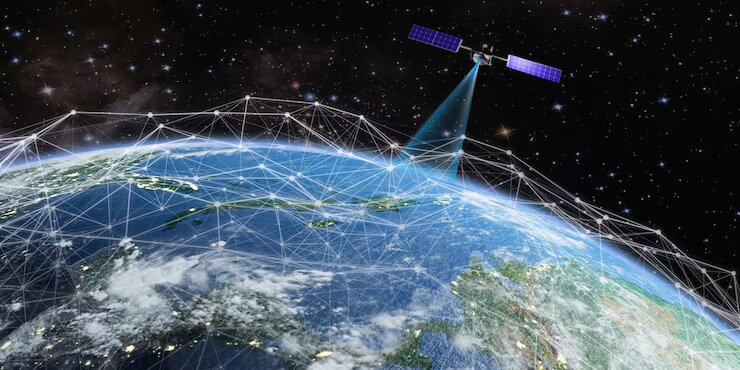- 14 March 2023
- 75
Amazon’s Plan to Revolutionize Internet Access with Satellite Technology

Are you tired of slow internet speeds and limited connectivity? Well, Amazon may have a solution for you. The tech giant has announced plans to revolutionize internet access using satellite technology. Yes, you read that right – satellites! With this groundbreaking project, Amazon aims to provide high-speed internet access to millions of people in remote areas around the world who are currently without reliable connectivity. So let’s dive into how Amazon is planning on changing the game with their innovative approach to global communication.
Amazon’s new satellite technology
Amazon’s new satellite technology, called Kuiper, is a constellation of 3,236 satellites that will provide low-latency, high-speed broadband internet to underserved communities around the world. Kuiper will be able to offer speeds of up to one gigabit per second, making it 50 times faster than current average speeds in the United States. The project is expected to cost Amazon $10 billion and will take several years to build.
When complete, Kuiper will provide internet access to more than 95% of the world’s population, including those in rural and remote areas that don’t have access today. In addition to providing much needed internet access, Kuiper will also create jobs and support economic growth in these underserved communities.
Amazon has already begun work on the first phase of the project, which includes building ground stations and launching the first batch of satellites. The company plans to begin offering service in select markets by late 2021 or early 2022.
How the technology will work
Amazon plans to provide global internet connectivity using a constellation of low earth orbit satellites. The system will provide broadband internet to areas where access is limited or non-existent.
The technology will work by sending signals from the satellites to ground stations, which will then relay the signals to customer premises equipment (CPE). The CPE will be able to connect to the internet using a standard modem or router.
The system is designed to be scalable and flexible, so that it can be used in a variety of applications and locations. Amazon believes that this technology has the potential to revolutionize internet access for millions of people around the world.
What this means for the future of internet access
There is no doubt that Amazon’s new satellite internet technology has the potential to revolutionize the way we access the internet. But what does this mean for the future of internet access?
For one, it could mean that we will see a lot more competition in the market for internet service providers (ISPs). This is because Amazon’s technology will make it easier for new entrants to provide high-speed internet access to consumers, which could lead to lower prices and better quality of service.
It could also mean that we will see more innovation in the way that we access the internet. For example, Amazon’s technology could be used to provide internet access in rural areas or other underserved parts of the world. Additionally, it could be used to develop new applications and services that take advantage of high-speed satellite internet.
Of course, only time will tell what the future of internet access holds. But there is no doubt that Amazon’s new satellite technology has the potential to greatly impact the landscape of how we connect to the web.
The pros and cons of Amazon’s new satellite technology
Amazon’s new satellite technology, called Kuiper, has the potential to revolutionize internet access. However, there are both pros and cons to this technology that need to be considered.
The main pro of Amazon’s new satellite technology is that it has the potential to provide high-speed internet access to rural and underserved areas. This would be a huge benefit for many people who currently do not have reliable or fast internet access. Additionally, this technology would also be much more affordable than current options for rural internet access, making it more accessible for everyone.
However, there are also some potential drawbacks to this technology. One worry is that Amazon could use its monopoly power to unfairly advantage itself in the market. Additionally, there are concerns about the environmental impact of launching so many satellites into orbit. Finally, some critics worry that this technology could lead to even greater inequality between those who have access to fast internet and those who do not.
Overall, Amazon’s new satellite technology has the potential to greatly improve internet access for many people around the world. However, there are also some potential risks that need to be considered before moving forward with this plan.
Conclusion
Amazon’s plan to revolutionize internet access with satellite technology is an exciting prospect for rural and underserved communities. By leveraging its existing infrastructure, the company can launch a powerful network of satellites that provide high-speed broadband coverage no matter where people live or work. This could potentially bring much-needed online access to millions of users and open up countless opportunities in education, commerce, and entertainment. As we wait to see how this ambitious project will unfold, it remains clear that Amazon has the potential to make huge strides when it comes to worldwide connectivity.

